The young John began to play with local bands at parties and school functions. He found too that playing the guitar won him friends. He went on from Arlington Heights High School at Fort Worth, Texas, to Texas Tech University at Lubbock to study architecture, helping to meet his expenses by playing in a rhythm and blues band – but soon found that music was consuming too much of his time, and dropped out of college, loaded up his Chevy, and drove to southern California.
There, he was scouted by a producer from Capitol Records, who asked him to make a demo disc – and suggested that he adopt a stage name – John Denver – as Deutschendorf would not fit on a record label. And from there, his career skyrocketed - with hits such as "Leaving on a Jet Plane", "Take Me Home, Country Roads", "Rocky Mountain High", "Sunshine on My Shoulders", "Thank God I'm a Country Boy", "Annie's Song" and "Calypso". His friend and manager, film producer Jerry Weintraub, who handled Denver's career from 1970 to 1984, summed it up by saying, "If you give Elvis the '50s and the Beatles the '60s, I think you've got to give John Denver the '70s."
With royalties from his 1974 hit album "Back Home Again", Denver bought a Lear jet—which he eventually piloted himself to concerts, but fought vices along the way. In later years he also admitted that "Rocky Mountain High" had been written under the influence of LSD and marijuana. Denver's father taught his son how to fly in 1976, which helped heal what had been a strained relationship - as "Dutch" wanted his son to follow his footsteps into a military career, rather than music. But Denver would earn his private pilot certificate, with ratings for single and multi-engine planes, single-engine seaplane and gliders. He also held an instrument rating and a Lear Jet type rating.
Over the years, his wealth allowed him to collect vintage biplanes, two Cessna 210s, and even a Christen Eagle aerobatic plane.
In 1985, he was awarded the NASA Public Service Medal for helping "increase awareness of space exploration by the people of the world."
In 1988. Denver expressed interest in flying aboard a Soviet spacecraft. But when the concept became late-night show comedic fodder, and the Soviet Union insisted he pay $10 million for the trip (a notion that would work for the Russian government in 2001), he dropped the idea.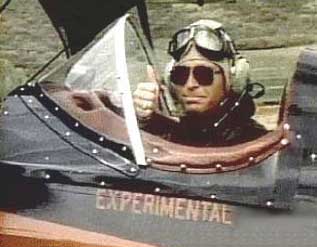
On the afternoon of April 20th, 1989, Denver, while landing during a refuel stop at Holbrook, Arizona, on a flight from Carefree, Arizona, to Sante Fe, New Mexico, his Waco QCF, registered as N12428, made a three point touchdown, when a gust of wind caught the airplane which became airborne. Denver attempted to reland, however, the landing was hard and the airplane bounced.He added full power when the airplane began to ground loop and, unable to maintain control, the airplane exited the runway into a sandy area. The National Transportation Safety Board (NTSB) concluded the probable cause of this accident was Denver's failure to maintain directional control of the airplane due to gusting wind conditions, and not adequately correcting the situation before the airplane traveled into soft terrain. Nevertheless, he walked away uninjured.
Denver had two drunken driving arrests in 1993 and 1994 in Colorado. He pleaded guilty to a lesser charge of driving while impaired in the 1993 case and was scheduled to be tried in January of 1998 for the 1994 accident, in which he smashed his Porsche into a cluster of trees. After these incidents, he sought treatment at a rehabilitation clinic.
Also in 1994, Denver was piloting his Christen Eagle at Jackson Hole Airport in Wyoming, when he taxied into a flight instructor's Cessna at a runway intersection.
After these accidents, Denver's medical certificate – an important document every pilot is required to have – came into question due to his alcohol abuse issues. He was allowed to keep flying, but the FAA ruled that "continued airman medical certification remains contingent upon your total abstinence for use of alcohol." At the time of his flight physical in June of 1996, he was issued a third-class medical certificate to the pilot at the conclusion of the examination.
But, the FAA, on routine inspection of his medical files, found that since Denver was no longer fully abstaining for alcohol (he reported to his doctor that, "in general, he averages two to four drinks of either wine or beer/week when he's traveling"), he was no longer medically qualified, and would be compelled to surrender his medical certificate. However, it is not known if Denver actually received notice of this ruling by the FAA.
"Leaving on a Jet Plane"...
An experienced pilot, he flew his own Lear jet, was at one time an aerobatic pilot, and was even licensed to fly gliders. He had flown aboard Air Force F-15 fighters and the Space Shuttle simulator. 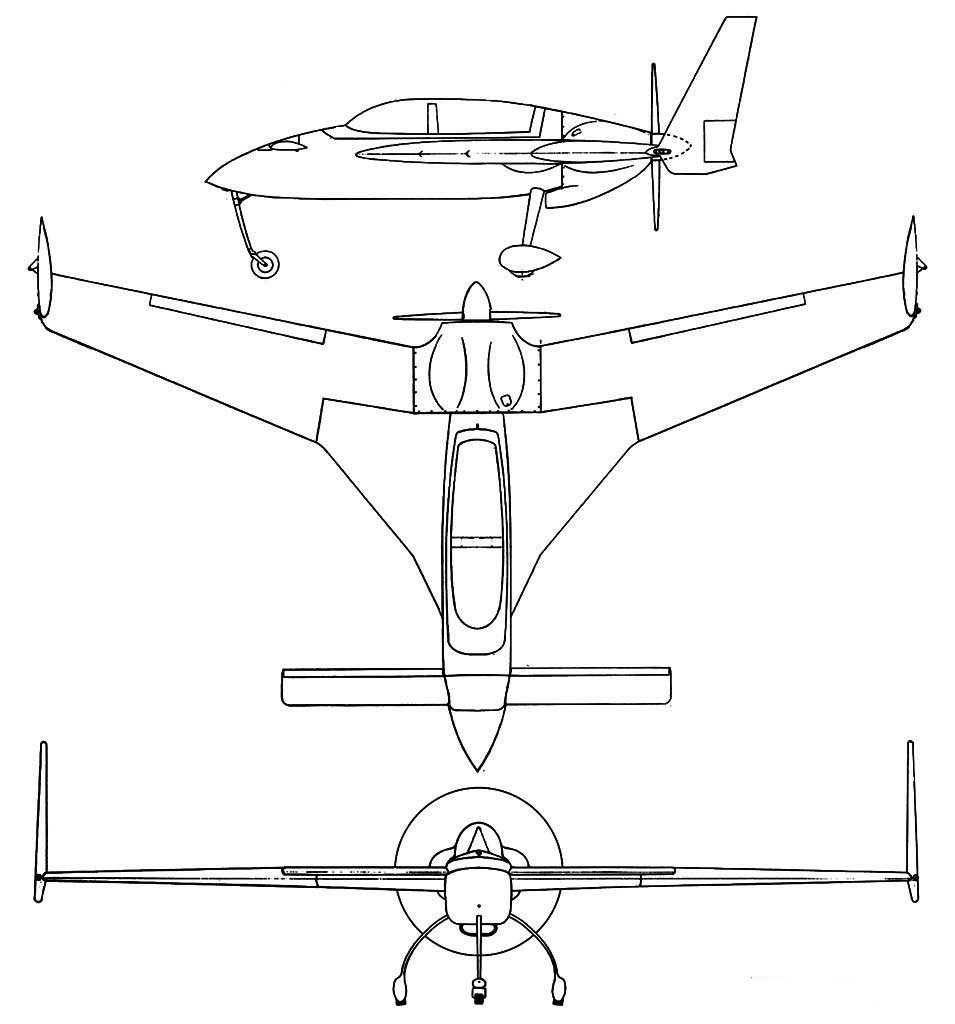
But he was also a confirmed daredevil, as some of his friends who had flown with him have attested. One favorite trick was to cut the engine about 35 miles out from Aspen, and glide in with no power. In 1997, he was looking for a new thrill, and he found it in the Long-EZ.The Rutan Model 61 "Long-EZ" is a popular homebuilt aircraft with a canard layout, which was designed by Burt Rutan's Rutan Aircraft Factory. It is derived from one of Rutan's previous designs, the VariEze, as a larger version, and the plans were first offered to homebuilders in 1980.
Vandell E. Snow, a noted southern California veterinarian and horse expert, had placed his Long EZ experimental airplane, registered as N228VS and which he had owned for 3 and a half years – flying it for 800 to 900 hours - for sale. "It's one of the very fastest Long EZes in the world, and it's won several competitions," Snow told People Magazine in October of 1997. "I've had no mechanical problems with it." Denver heard the unique plane, powered by a 150 horsepower Lycoming O-320-E3D engine, was for sale and came to look at it. He found a local, Eric Cobb, who knew how to fly the Long-EZ, and both men went up for a test ride. Furthermore, he had it checked out by two mechanics, who both gave it a thumbs-up.
According to Snow, "The next week, John called up and said he loved the plane and wanted to buy it." Paying $56,000 for the plane, Denver bought it on September 27, 1997, and had Eric Cobb fly it from Santa Ynez to the Santa Maria airport to have it painted by Art Craft Painting and Interior. There, Teresa Venegas, the owner of Art Craft, was paid $6,000 to have the plane painted white, with four trim colors: dark red, orange, light blue and medium blue. Denver also directed the registration number of the plane be changed to N555JD. He continued touring, playing a concert in Corpus Christi, Texas, on the night of October 5th, 1997. The final song he played that night was "Calypso", a popular song written by Denver in 1975 as a tribute to Jacques-Yves Cousteau, his research ship Calypso, and her crew.
Venegas said Denver was "very excited about the paint job" when he came back to Santa Maria around noon on Saturday, October 11th, to pick up his plane. The singer invited Venegas and four of her employees to lunch at the airport restaurant and after lunch, just before he got in the plane to fly it up to Monterey, "he hugged me. He was laughing and smiling the whole time he was here," she said.
"He flew with an experienced pilot for quite a few hours and executed quite a few landings," said Snow. "I'm told he did quite well." With the checkout pilot, Denver performed two touch-and-go landings and some slow flight maneuvers, and they discussed the aircraft systems.
Snow also heard Denver state: "I'm gonna have a great Sunday. I'm gonna play golf, and then I'm gonna fly my new bird," before he left Santa Maria for Monterey.
On the afternoon of October 12th, 1997, Denver and several friends had completed a round of golf at Spyglass Hill Golf Course. His buddies tried to coax him into another round, but Denver could not be persuaded. He was anxious to try out his freshly-painted plane. "They finished and were at the clubhouse debating it," said Dale Taylor, assistant pro at the club. "John said, I’d love to play but I got a new plane. I'm going to practice my landings and takeoffs.'"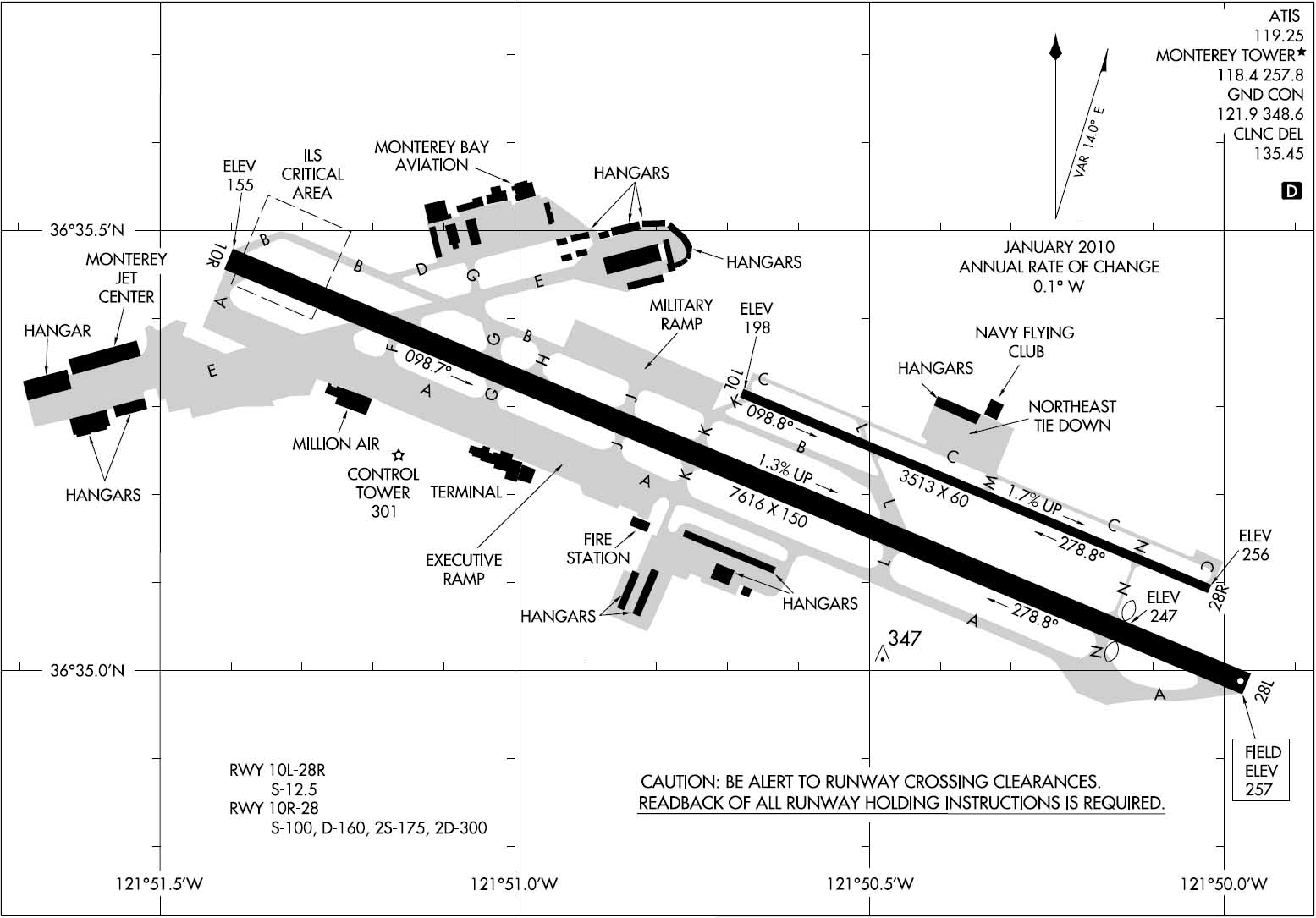
Dressed in green trousers and a multi color sweater, and wearing a "Yuma Rod and Gun Club" cap and cowboy boots, Denver arrived at the airport, with light winds and clear skies. An aircraft maintenance technician, Christin Hadland, who assisted Denver in removing the Long-EZ from a hangar before the flight stated that he observed Denver perform a preflight check that took about 20 minutes. The technician stated that Denver borrowed a fuel sump cup and drained a fuel sample to check for contaminants, but did not observe whether the pilot visually verified the quantity of fuel aboard the airplane, nor did he see the pilot check the engine oil level.
The technician, in his interview with the NTSB, stated that he and Denver talked about the inaccessibility of the cockpit fuel selector valve handle and its resistance to being turned, as the handle was located behind the pilot's left shoulder - counter to Rutan's original design. Unique to this homebuilt Long-EZ, the builder - Adrian Davis of Texas - elected to relocate the switch behind the pilot because he did not want to have fuel lines running into the cockpit, especially down where they might rupture in a belly landing.
Despite this, an FAA inspector certified the airworthiness of the plane overlooked this in 1987, when the craft was constructed. But Denver was not a fan of the change – he had, the day before, coordinated with his checkout pilot to have the fuel selector relocated to where Rutan held intended.
The designer accounted for possibility of ground impact by strengthening the fuselage below the fuel switch to provide additional protection of the fuel lines.
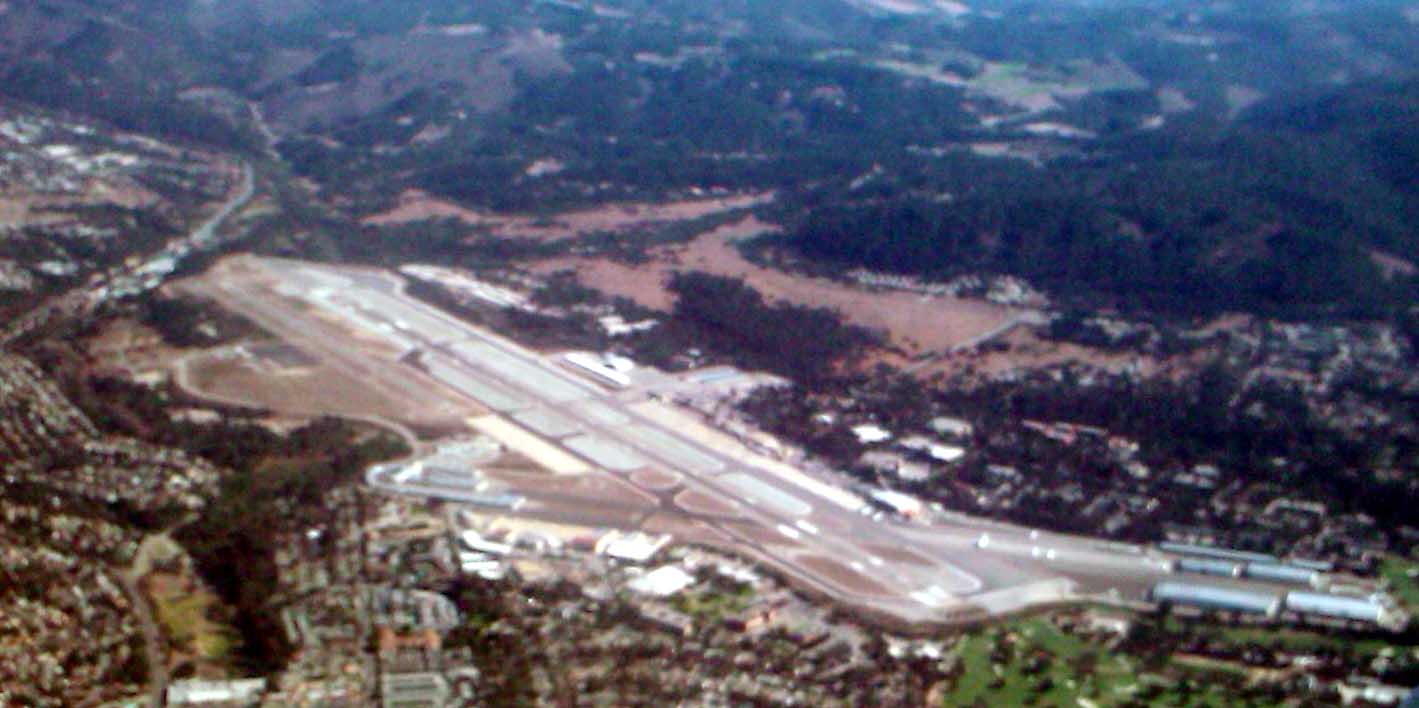 Nevertheless, Denver and the technician attempted to extend the reach of the handle, using a pair of vice grip pliers. But this did not solve the problem as Denver could not reach the handle. Thinking on his feet, Denver said he would use the autopilot in flight, if necessary, to hold the airplane level while he turned the fuel selector valve. The technician also provided a shop inspection mirror to Denver so that he could look over his shoulder at the fuel sight gauges.
Nevertheless, Denver and the technician attempted to extend the reach of the handle, using a pair of vice grip pliers. But this did not solve the problem as Denver could not reach the handle. Thinking on his feet, Denver said he would use the autopilot in flight, if necessary, to hold the airplane level while he turned the fuel selector valve. The technician also provided a shop inspection mirror to Denver so that he could look over his shoulder at the fuel sight gauges.
According to the technician, Denver declined an offer of fuel service, stating that he would only be flying for about an hour. Denver then got in the airplane and proceeded with his preflight duties, including checking the operation of the control surfaces. According to the technician, he observed the fuel selector handle in a vertical position, and that the fuel levels were "less than half in the right tank and less than a quarter in the left tank" when he left Denver to go into the hangar to put away his tools. The technician then heard the engine start; however, it soon went quit. He walked out of the hangar and observed Denver turned in his seat to the left, toward the fuel selector location. The technician said he believed that the pilot changed the fuel selector and restarted the engine.
Shortly after 5pm, Denver contacted Monterey's ground control and obtained a taxi-for-takeoff clearance from the hangar. Seven minutes later, after he taxied and performed an engine runup, he contacted Monterey Tower and reported that he was ready for takeoff on runway 28, and requested to stay in the traffic pattern for some touch-and-go landings. He was cleared for takeoff at 5:12, and performed three touch-and-go practice landings when, at 5:27, he asked to depart the traffic pattern of Monterey Peninsula Airport for about an hour. Cleared to leave, the tower asked Denver to reset his transponder, a radio transmitter that allows a pilot to key in a signal which is picked up by radar for identification, to 0367. His first signal wasn't picked up, so he recycled it, and tried again.
"Do you have it now?" he said. Those would be Denver's final recorded words.
"Sunshine on My Shoulders"...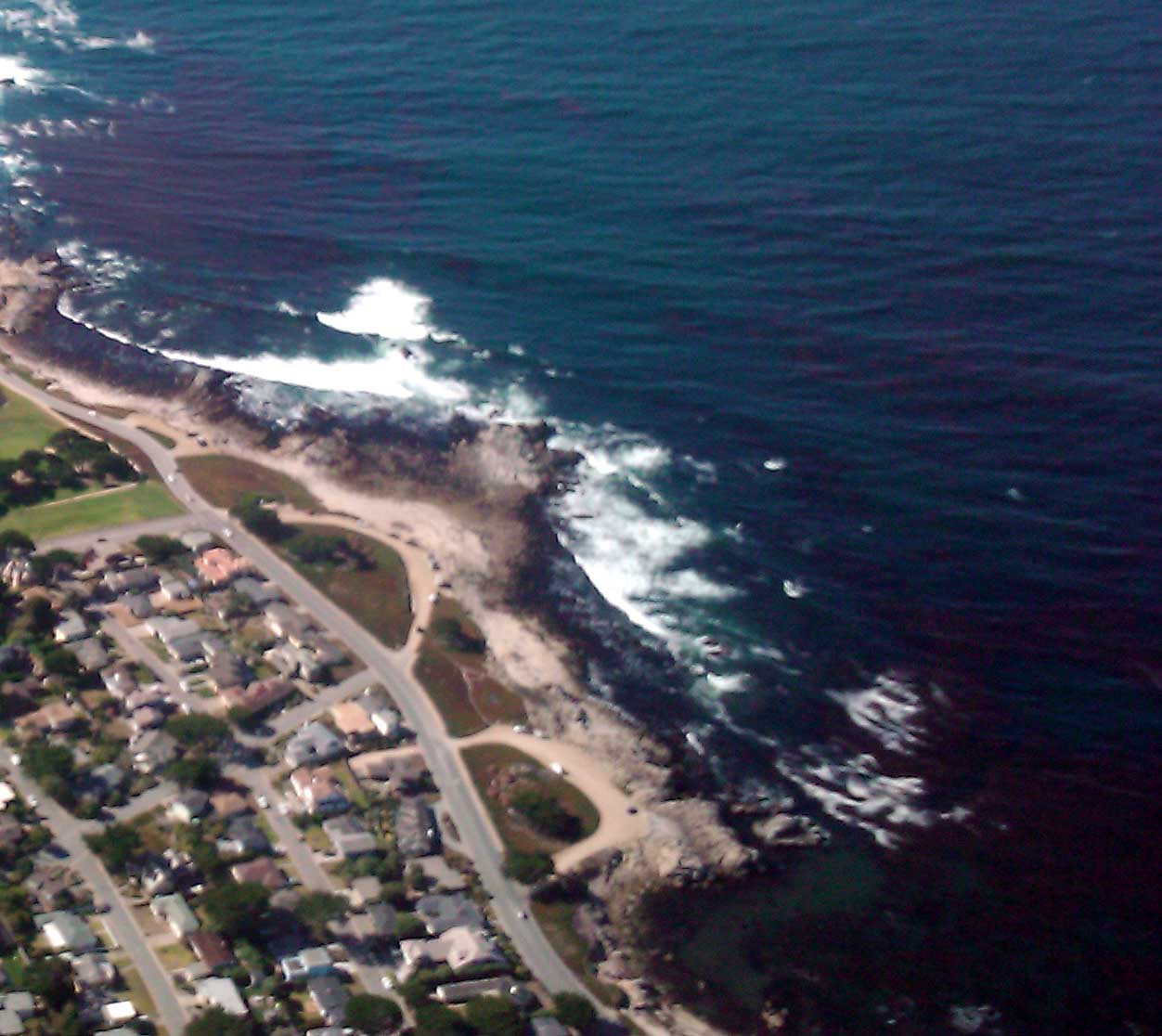
The plane was flying about 500 feet in the air "when it just sort of dropped unexpectedly into the ocean," according to Pacific Grove police Lt. Carl Miller.
Eyewitness Carolyn Pearl told local news station KCBA-TV that she saw a puff and heard a "popping" sound before the crash. The plane "kind of went up a little bit and absolutely straight down, not spiraling, just absolutely straight down," she said. "I thought it was doing some kind of acrobatic move, or something, and then realized it wasn't."
"The engine was backfiring, like he was having carburetor trouble," says Jim Willoughby, a retired schoolteacher who lives near the crash site. "Then he banked to one side, with the right wing down, the left wing up. I thought he was a stunt pilot. Then he hit the water. It sounded like 100 tons of concrete dropped from the heavens."
"I saw it hit the water and then a big splash of water came up over it," said another witness, Linda Shuman. "There was debris everywhere and the birds were in a frenzy. There were pieces everywhere."
Less than five minutes after the crash, Pacific Grove Fire Department Assistant Chief Andrew Miller arrived at the scene. "There was debris scattered everywhere on the water," he said. Seagulls quickly descended on the scene, but with strong westerly currents, the debris and Denver's mangled body drifted towards the beach. Twenty minutes after the impact, a lifeguard recovered the remains which were so badly mangled, Coast Guard Petty Officer Steve Aitkins stated, “"They cannot make an ID from the body,” to confirm who was the pilot.
The Monterey county Coroner's Office ultimately required fingerprints records obtained from the state of Colorado to positively identify his remains, according to Sheriff Norman Hicks. 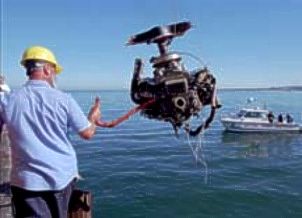
Those around Denver were stunned - "My feelings were somewhere between absolute sickness and disbelief," Snow said. "He's such a great pilot and that was such a great plane - it's hard for me to understand."
As the sun rose over the crash site the following morning, a Coast Guard helicopter circled overhead, appearing to look for more debris from the crash, and a Coast Guard ship floated over the site about 100 yards from shore. Divers from the National Oceanic and Atmospheric Administration, Monterey Bay National Marine Sanctuary, discovered broken rock structures where the airplane wreckage was located on the sea floor.
On the morning of Tuesday, October 15th, divers from the Pacific Grove Ocean Rescue Team and Sheriff's Dive Team located and recovered the engine of Denver's plane, still with the wooden composite-covered propeller hub attached to it, in 40 feet of water and turned it over to NTSB investigators. "Piece by piece, we'll put the airplane back together. We're very happy with the condition of the engine," Peterson said. 'The salt water has not taken its toll on the engine as much as we had feared."
Early in the investigation, it was found that there were no leading edge canard or wing sections intact, the canopy was destroyed, and only fragments of the Plexiglas were recovered. Furthermore, bird feathers were found commingled in the recovered wreckage. Early evidence pointed to the possibility of Denver having struck a bird in flight.
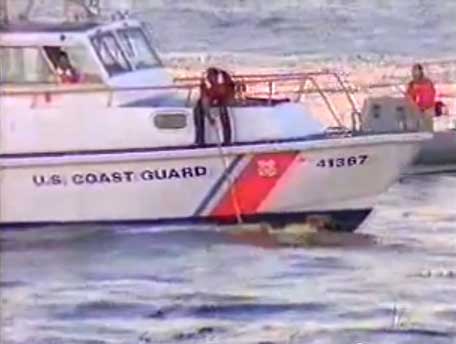 But, also found in the wreckage was a seat cushion that was torn open. According to the cushion material tag, it was filled with goose feathers. The curator of a local Museum of Natural History was asked to view the feathers by the NTSB and, although duck feathers were also found in the cushion, the cushion feathers matched the ones found strewn with the wreckage. Denver had the use the cushion to aid his reach to the plane's rudder pedals.
But, also found in the wreckage was a seat cushion that was torn open. According to the cushion material tag, it was filled with goose feathers. The curator of a local Museum of Natural History was asked to view the feathers by the NTSB and, although duck feathers were also found in the cushion, the cushion feathers matched the ones found strewn with the wreckage. Denver had the use the cushion to aid his reach to the plane's rudder pedals.
Denver's recovered remains were cremated, and a representative of Parker Funeral Home in Aspen, Colorado, took the ashes personally to his adopted home state. His funeral was held on Friday, October 17th, at the Faith Presbyterian Church in Aspen. Nearly 2000 people, and John Denver's horse Tonto, attended the memorial service, which was officiated by Pastor Les Felker. Highlighting the service was a flyover of six airplanes, rocking their wings in tribute.
On October 22nd, NTSB spokesman Matt Furman revealed that the engine of Denver's plane was operating were it crashed, but the plane was so damaged by the crash that neither the propellers nor the wing flaps have been recovered to that point. Also, it was stated that the fuel was low, but not dangerously so, and that the fuel tank ruptured upon impact.
On October 28th, Monterey County Sheriff Norm Hicks said toxicology tests carried out by his office found no traces of alcohol, controlled substances, prescription drugs or anything else in the singer's bloodstream, and revealed that Denver had died of "multiple blunt force trauma".
In October of 1998, Denver's children, along with his mother, Erma, filed a lawsuit in California Superior Court of Monterey County (Docket # M41378) against Imperial Eastman Corporation, Mark IV Industries, Gould Electronics, and Dayco Eastman, Wicks Aircraft Supply Company, Artcraft of Santa Maria and Van E. Snow. According to the complaint, Imperial, Mark IV and Dayco designed, manufactured, inspected, tested, produced, sold, distributed and provided warning, instruction, and after-sale product support of the systems, assemblies, parts or fuel selector valve on the Long-EZ. Wicks sold, distributed and supplied parts including selector valves. Artcraft painted and serviced the Long-EZ, while Van E. Snow and a number of "John Doe Defendants" were the prior owners and sellers of the plane, or were responsible for maintenance, service, inspection, modification and tests of the aircraft along with others. The case was settled in September of 2000.
The plane had no flight data or voice recorder, so investigators had to piece together their account of the plane's final minutes. They surmised that, shortly after Denver's last communication, he apparently attempted to reach behind his left shoulder to switch the plane's engine from one fuel tank to another. The uncomfortable stretch caused his right foot to press against the right rudder.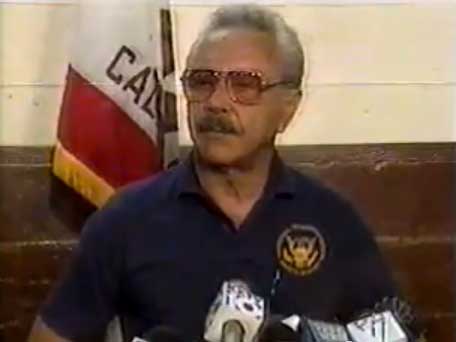
George Petterson, the NTSB's investigator-in-charge for the crash, appeared in a video showing what it would be like to turn the fuel switch in the cramped cockpit. His pretzel-like pose, coupled with the involuntary movement of his right foot, proved persuasive to the five-member board, which voted 5-0 on the probable cause.
On January 27, 1999, the NTSB concluded the probable cause was Denver's fatal accident was the pilot's diversion of attention from the operation of the airplane and his inadvertent application of right rudder that resulted in the loss of airplane control while attempting to manipulate the fuel selector handle. Also, the NTSB determined that the pilot's inadequate preflight planning and preparation, specifically his failure to refuel the airplane, was causal. The NTSB further determined that the builder's decision to locate the unmarked fuel selector handle in a hard-to-access position, unmarked fuel quantity sight gauges, inadequate transition training by the pilot, and his lack of total experience in this type of airplane were factors in the accident.
To prevent similar accidents, the NTSB proposed the following recommendations to the Federal Aviation Administration:
- Amend the FAA Order dealing with experimental aircraft so that proper placards and markings on cockpit instruments are present and that essential systems controls are easily found and operated during flight.
Amend the FAA Order that addresses annual inspections of experimental aircraft to ensure that operators are in compliance with the first recommendations. The NTSB also recommended to the Aviation Insurance Association and the Experimental Aircraft Association that they work with the FAA to establish this training program so that pilots flying experimental aircraft have advanced, aircraft-specific training.
The coastal area where he crashed is informally known as John Denver Beach, and it hosts an annual pilgrimage of John Denver fans of the anniversary of his death.
On September 24, 2007, the California Friends of John Denver and The Windstar Foundation unveiled a bronze plaque between Acropolis Street and Asilomar Avenue at Point Pinos, near the spot where his plane went down near Pacific Grove.
The site had been marked by a driftwood log carved by Jeffrey Pine of Colorado with the singer's name, but fears that the makeshift memorial could be washed out to sea sparked the campaign for a more permanent memorial. Initially, the Pacific Grove Council denied permission for the memorial, fearing the place would attract unwanted curiosity from extreme fans, but permission was finally granted in 1999. However, the project was put on hold at the request of the singer's family until the 10th anniversary of his untimely demise.
Over 100 friends and family attended the dedication of the plaque, which features a bas-relief of the singer's face and lines from his song, "Windsong": "So welcome the wind and the wisdom she offers. Follow her summons when she calls again."
There is also a tree planted in his memory and a plaque honoring John Denver in the Monarch Sanctuary. Finally, there is a small Monterey cypress - named "Alfie"
